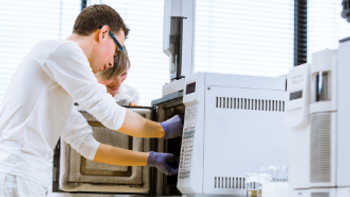
Breakthrough Method Enables Discovery of Natural Aldehydes for Metabolomics Research
The development of a newly-designed Girard's reagent, HBP, as charged isobaric mass tags has enabled selective capture and sensitive detection of aldehyde metabolites. The LC–dNLS-MS/MS screening approach using this reagent has successfully facilitated the discovery of natural aldehydes and their profiling in complex samples.
Aldehyde-containing metabolites have been the focus of scientific interest due to their prevalence in organisms and natural foods. In a recent study published in the Journal of Chromatography A, researchers from Hunan Normal University in China introduced a groundbreaking approach for the identification and profiling of aldehyde metabolites using a specially designed Girard's reagent called 1-(4-hydrazinyl-4-oxobutyl)pyridin-1-ium bromide (HBP) (1). By utilizing HBP as a charged tandem mass tag, the researchers were able to significantly enhance the detection signals of aldehydes, leading to increased sensitivity and enabling the discovery of previously unknown natural aldehydes.
The researchers employed a process called isotope-coded derivatization, using a pair of labeling reagents, HBP-d0 and HBP-d5, to convert aldehyde analytes into hydrazone derivatives. These derivatives produced characteristic neutral fragments of 79 Da and 84 Da, respectively, enabling their identification through liquid chromatography-tandem mass spectrometry (LC–MS/MS). The isobaric labeling method with HBP-d0 and HBP-d5 was validated by quantifying human urinary aldehydes and successfully discriminating between diabetic and control samples with high precision.
One of the key innovations of this method is the use of dual neutral loss scanning (dNLS), which exploits unique isotopic doubles with a mass difference of 5 Da. This reactivity-based screening strategy allows for the non-targeted profiling and identification of endogenous aldehydes, even in the presence of complex and noisy data. Applying the LC–dNLS–MS/MS screening to cinnamon extracts, the researchers discovered a remarkable total of 61 possible natural aldehydes, including 10 congeners that were previously unidentified in this medicinal plant.
LC–dNLS-MS/MS screening refers to a targeted analytical approach that combines liquid chromatography (LC) with dual neutral loss scanning (dNLS) using tandem mass spectrometry (MS/MS). In this method, the LC system is used to separate and elute the analytes of interest, while dNLS is employed as a selective fragmentation technique during MS/MS analysis. By utilizing specific mass spectrometric conditions, the dNLS mode allows for the simultaneous monitoring of multiple neutral loss events, typically with a mass difference of 5 Da. This screening strategy enables the identification and profiling of compounds that undergo specific neutral loss reactions, such as aldehydes, providing a powerful tool for targeted analysis and characterization of metabolites or other compounds in complex samples. The LC–dNLS-MS/MS screening approach offers enhanced selectivity and sensitivity, facilitating the identification of analytes of interest even in the presence of interferences or complex backgrounds.
The introduction of the HBP-based derivatization technique opens up new possibilities for the comprehensive study of aldehyde-containing metabolites, facilitating their detection, profiling, and potential functional analysis. This advancement not only enhances our understanding of the roles and functions of aldehydes in biological systems, but also provides valuable insights into the chemical composition of natural products, such as medicinal plants. With its wide-ranging applications, this methodology holds great promise for further advancements in metabolomics research and the exploration of aldehyde-related processes in various fields, including medicine, nutrition, and environmental sciences.
Reference
(1) Huang, L.; Teng, H.; Wang, M.; Fang, J.; Yuan, Y.; Ma, M.; Luo, Z.; Chen, B.; Guo, B. Isotope-coded derivatization with designed Girard-type reagent as charged isobaric mass tags for non-targeted profiling and discovery of natural aldehydes by liquid chromatography-tandem mass spectrometry. J. Chromatogr. A 2023, 1702, 464084. DOI:
Newsletter
Join the global community of analytical scientists who trust LCGC for insights on the latest techniques, trends, and expert solutions in chromatography.




